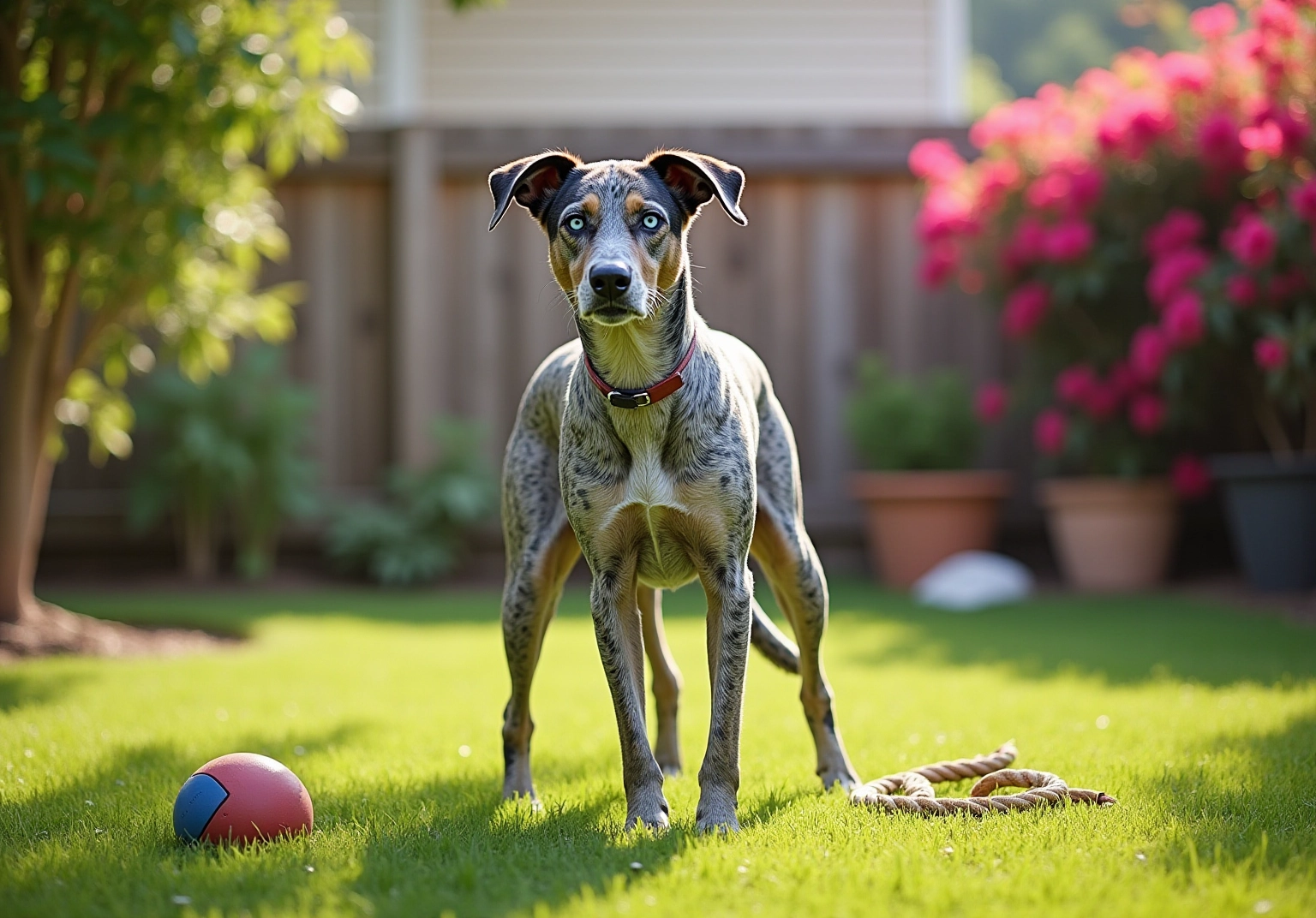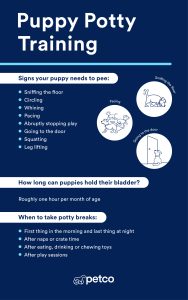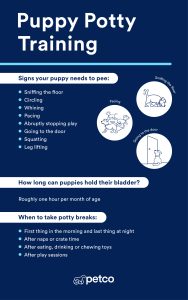Training your Catahoula Leopard Dog can feel like a big challenge, but it doesn’t have to be. If you want a well-behaved, happy companion, understanding how to train this unique breed is key.
Your Catahoula is smart, energetic, and eager to learn—but only if you know the right approach. You’ll discover simple, effective techniques that make training easier and more enjoyable for both of you. Keep reading, and you’ll soon have a loyal dog who listens and loves spending time with you.

Credit: www.reddit.com
Breed Traits To Know
The Catahoula Leopard Dog is a unique and active breed. Understanding its traits helps in training and caring for it.
Knowing the breed’s physical traits, temperament, and energy levels guides how you train your dog well.
Physical Characteristics
The Catahoula Leopard Dog is medium to large in size. It has a muscular body built for work and endurance.
Its coat is short and dense with a unique spotted pattern. Eye colors can vary, sometimes even within one dog.
- Height: 20 to 26 inches
- Weight: 50 to 95 pounds
- Coat: Short, dense, and weather-resistant
- Colors: Leopard spots in many combinations
- Eyes: Blue, green, amber, or combinations
Temperament And Behavior
Catahoulas are intelligent and loyal dogs. They bond closely with their families and protect them.
This breed can be independent and stubborn. Early training and socialization are very important for good behavior.
- Intelligent and quick learners
- Loyal and protective of family
- Independent and sometimes stubborn
- Needs early socialization with people and pets
- Can be wary of strangers
Energy Levels
This breed has very high energy and stamina. They need daily exercise to stay healthy and happy.
Without enough activity, Catahoulas may become bored and destructive. Outdoor play and mental challenges work best.
- High daily energy needs
- Enjoys running, hiking, and playing
- Thrives with mental stimulation
- Needs regular exercise sessions
- Not suited for long periods alone
Setting Training Goals
Training your Catahoula Leopard Dog needs clear goals. Set goals to guide your sessions and track progress.
Good goals help your dog learn faster and build strong habits. Start simple and add challenges over time.
Basic Obedience Commands
Begin with simple commands like sit, stay, and come. These teach your dog good manners and control.
Practice these commands daily in short sessions. Use treats and praise to reward your dog.
- Sit: helps your dog stay calm and focused
- Stay: teaches patience and self-control
- Come: keeps your dog safe off-leash
- Down: encourages calm behavior
- Leave it: prevents unwanted chewing or eating
Socialization Needs
Catahoulas need socialization to behave well around others. Expose your dog to people and animals early.
Socializing reduces fear and aggression. Use positive experiences to build confidence.
- Introduce new people calmly
- Visit parks and dog-friendly places
- Meet other dogs with supervision
- Expose your dog to sounds and environments
- Reward calm and friendly behavior
Advanced Skills
After basic training, teach advanced skills like tracking or agility. Catahoulas are smart and active dogs.
Choose skills that match your dog’s energy and interests. Practice regularly and keep sessions fun.
- Tracking: use scent games to build focus
- Agility: set up obstacle courses for exercise
- Recall with distractions: improve safety
- Trick training: stimulates your dog’s mind
- Off-leash obedience: for freedom and control
Effective Training Techniques
Training a Catahoula Leopard Dog takes time and effort. These dogs are smart and active. They need clear guidance to learn well.
Using the right training techniques helps your dog behave better. It also builds a strong bond between you and your dog.
Positive Reinforcement
Positive reinforcement means rewarding good behavior. This encourages your dog to repeat that behavior. Use treats, praise, or toys as rewards.
Always reward your Catahoula right after it does the right thing. This helps the dog connect the reward with the action.
- Give treats for obeying commands
- Use kind words and petting for praise
- Play with toys as a fun reward
- Avoid punishment for mistakes
Consistency And Patience
Be consistent in your commands and routines. Use the same words and signals for each command. This helps your dog understand better.
Patience is key when training a Catahoula. They may take time to learn new skills. Stay calm and keep practicing daily.
- Train at the same time each day
- Use clear and simple commands
- Practice short training sessions
- Remain calm if your dog makes mistakes
Avoiding Common Mistakes
Do not use harsh punishments or yelling. This can make your dog scared or confused. Avoid training sessions that last too long.
Do not ignore bad behavior. Correct it gently but firmly. Avoid mixed signals by being clear and consistent in your training.
- Never hit or yell at your dog
- Stop training before your dog gets tired
- Address bad behavior quickly
- Use clear and consistent commands
Socializing Your Catahoula
Socializing your Catahoula Leopard Dog is important for a happy, confident pet. It helps them behave well around people and animals.
Start socializing early to make new experiences normal for your dog. This can prevent fear or aggression later.
Introducing To People
Let your Catahoula meet different people often. Include adults, children, and people with hats or glasses.
Use calm praise when your dog stays relaxed. Allow your dog to approach new people at their own pace.
- Keep meetings short and positive
- Avoid forcing contact
- Reward calm behavior with treats
- Practice in different places
Meeting Other Animals
Introduce your Catahoula to other dogs and animals carefully. Watch their body language for signs of stress.
Start with calm, friendly animals in a safe space. Keep your dog on a leash at first for control.
- Use treats to reward good behavior
- Keep meetings brief and positive
- Separate if either animal shows aggression
- Gradually increase time together
Handling New Environments
Help your Catahoula feel safe in new places. Take short trips to parks, streets, or friends’ homes.
Let your dog explore at a slow pace. Use praise to build confidence in new surroundings.
- Bring familiar toys or blankets
- Keep your dog on a leash for safety
- Watch for signs of fear or stress
- Give breaks if the dog feels overwhelmed
Managing High Energy
The Catahoula Leopard Dog is a very active breed. They need proper management of their energy to stay calm and happy.
Training this dog means giving it enough exercise and mental work every day. This helps avoid bad behavior caused by boredom.
Daily Exercise Routines
Regular exercise helps the Catahoula burn off energy. Long walks, runs, or hikes are great options for this breed.
Try to exercise your dog at least one hour every day. This keeps their muscles strong and their mind calm.
- Morning jogs to start the day
- Evening walks to relax muscles
- Off-leash time in safe areas
- Swimming for low-impact exercise
Mental Stimulation Activities
Catahoulas need mental challenges to stay focused. Puzzle toys and scent games work well for their intelligence.
Change the activities often to keep their interest. This prevents boredom and destructive behavior.
- Hide treats around the house
- Use puzzle feeders for meals
- Teach new commands regularly
- Practice scent tracking games
Using Play For Training
Play is a fun way to teach the Catahoula new skills. Use toys like balls or frisbees to keep training lively.
Short play sessions improve focus and build your dog’s trust. Reward good behavior with playtime.
- Use fetch to practice recall commands
- Play tug to teach impulse control
- Include obedience drills in playtime
- Keep sessions short and frequent

Credit: www.reddit.com
Addressing Behavioral Challenges
Catahoula Leopard Dogs are smart and energetic. They need training to behave well. Some common problems are barking, chewing, and separation anxiety.
Understanding these behaviors helps you train your dog better. Use clear commands and patience to guide them.
Dealing With Barking
Catahoulas bark to alert or get attention. Too much barking can be a problem. Teach them when it is okay to bark.
Use commands like “quiet” to stop barking. Reward your dog when they stay calm and quiet.
- Ignore barking that seeks attention
- Give treats for quiet behavior
- Use exercise to reduce excess energy
Preventing Destructive Chewing
Catahoulas chew to explore or relieve stress. Chewing on furniture or shoes is bad. Give them safe chew toys instead.
Remove items they like to chew that are not toys. Praise your dog when they chew the right things.
- Provide plenty of chew toys
- Keep personal items out of reach
- Exercise your dog to reduce stress
- Use a bitter spray on furniture if needed
Handling Separation Anxiety
Catahoulas may feel anxious when left alone. This can cause barking, chewing, or accidents. Help your dog feel safe when alone.
Practice short times apart and reward calm behavior. Create a comfortable space with toys and water.
- Start with brief separations
- Use calming toys or blankets
- Keep departures and arrivals low-key
- Exercise your dog before leaving
Tools And Resources
Training a Catahoula Leopard Dog takes patience and the right tools. Using proper equipment and resources helps guide your dog well.
These tools can make training easier and improve communication between you and your dog.
Recommended Training Equipment
Good training gear helps keep your dog safe and focused. It also supports positive learning habits.
- Sturdy leash for control during walks and training
- Adjustable collar or harness for comfort and safety
- Clicker for clear, consistent signals
- Treat pouch to reward good behavior quickly
- Long line for recall training in open spaces
Helpful Training Apps
Training apps provide guidance and track progress. They offer tips suited for active dogs like the Catahoula Leopard.
- Puppy training apps with step-by-step lessons
- Behavior tracking tools to monitor improvements
- Reminder apps for regular training sessions
- Video tutorials showing proper techniques
- Community forums to share experiences and advice
Finding Professional Trainers
Professional trainers can guide you through tough training stages. They use methods that fit your dog’s unique personality.
Look for trainers with experience in working with strong, smart breeds like the Catahoula Leopard Dog.
- Ask for recommendations from local dog clubs or vets
- Check certifications and training styles
- Choose trainers who use positive reinforcement
- Visit training sessions before enrolling
- Find trainers who offer group or private lessons
Maintaining Progress
Training a Catahoula Leopard Dog takes time and patience. Keeping the progress is key to good behavior.
Consistency helps your dog remember what you taught. Here are ways to keep the training strong.
Regular Practice Sessions
Practice every day to keep your dog’s skills sharp. Short sessions work best for Catahoulas.
Use commands your dog knows and add new ones slowly. This keeps training fun and clear.
- Spend 10 to 15 minutes daily
- Repeat basic commands like sit and stay
- Use treats and praise for motivation
- Keep sessions positive and calm
Adapting Training Over Time
Your dog changes as it grows. Change training to fit its age and energy level.
Try new challenges to keep your dog interested. Adjust commands to match your dog’s skills.
- Increase difficulty slowly
- Introduce new commands or tricks
- Use different places for training
- Notice what motivates your dog most
Celebrating Milestones
Reward your dog when it learns something new. This builds confidence and a strong bond.
Mark achievements with treats, playtime, or praise. Celebrate small wins to keep training fun.
- Give a tasty treat after success
- Offer extra playtime or petting
- Use happy words and smiles
- Take photos to remember milestones

Credit: www.adventureden.ca
Frequently Asked Questions
How To Start Training A Catahoula Leopard Dog?
Begin with basic obedience commands like sit, stay, and come. Use positive reinforcement techniques such as treats and praise. Consistency is key. Start training in a quiet environment to minimize distractions. Gradually introduce more challenging commands and environments as your dog becomes more confident and responsive.
What Are Effective Training Techniques For Catahoulas?
Use positive reinforcement like treats and praise to encourage good behavior. Consistent training sessions help reinforce commands. Introduce clicker training for precise communication. Socialize your Catahoula early with other dogs and people. Keep sessions short and engaging to maintain their interest and motivation.
How Often Should I Train My Catahoula?
Train your Catahoula Leopard Dog daily for optimal results. Keep sessions short, around 10-15 minutes, to maintain their focus. Consistent, daily sessions help reinforce learned commands and behaviors. Incorporate training into everyday activities for practical application. Regular training strengthens your bond and enhances their obedience.
Are Catahoulas Easy To Train?
Catahoulas are intelligent but can be stubborn. They require consistent, firm, and patient training. Positive reinforcement methods work best. Early socialization is crucial to ensure they grow into well-mannered adults. With the right approach, they can learn a variety of commands and tasks effectively.
Conclusion
Training a Catahoula Leopard Dog takes patience and care. Start early and be consistent every day. Use clear commands and praise good behavior often. Keep training sessions short to hold your dog’s attention. Remember, these dogs need mental and physical exercise.
A well-trained Catahoula is happy and confident. Enjoy the journey of building a strong bond together. Training is part of a lasting friendship. Stay calm and positive through the process. Your effort will show in your dog’s good manners.

Emily Barker is the founder of ChillDogLife.com, a space dedicated to helping pup parents discover the best dog products, lifestyle tips, and cozy ideas for happier homes.
A lifelong dog lover, Emily combines her passion for pets with a knack for research to share trusted recommendations on everything from toys and furniture to health and everyday care.
Her goal is simple: to make life easier, stylish, and more joyful for dogs and the people who love them.







